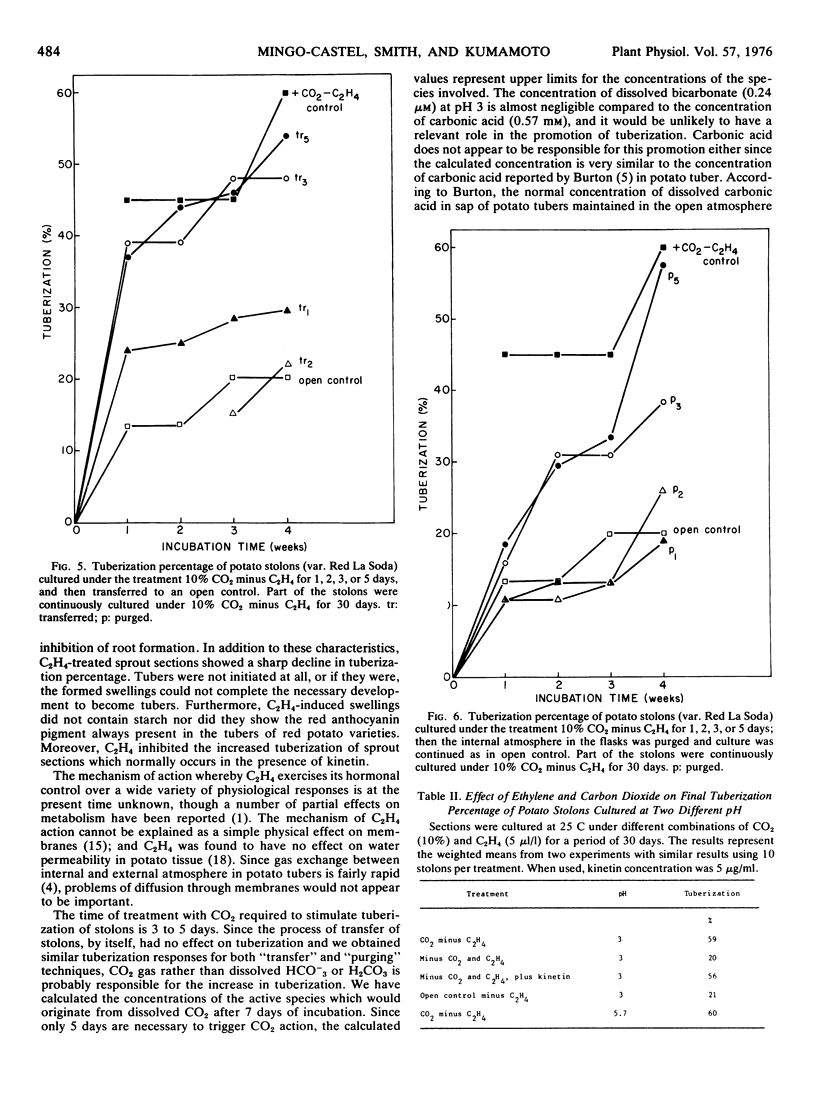Abstract
Ethylene inhibited the tuberization of etiolated potato (Solanum tuberosum L. var. Red La Soda) sprout sections cultured in vitro. Carbon dioxide did not overcome the C2H4 inhibition but it was required for normal tuberization. Ethylene totally prevented root formation and development. It inhibited stolon elongation, and caused thickening and diageotropical growth of the stolon. In addition, C2H4 prevented the accumulation of both starch and red anthocyanin which are always present in a tuber. Ethylene also inhibited the kinetin-increased tuberization of sprout sections.
Three to five days of exposure to CO2 were required to obtain promotion of tuberization of stolons cultured in vitro. Bicarbonate ion did not affect starch synthetase activity isolated from potato tubers in vitro. The evidence presented suggests that CO2 gas rather than HCO−3 or CO2−3 ions in equilibrium with dissolved CO2 was probably responsible for the stimulation. Morphological changes elicited by CO2 and C2H4 are described and the mechanism of action of both on tuberization is discussed.
Full text
PDF





Images in this article
Selected References
These references are in PubMed. This may not be the complete list of references from this article.
- Apelbaum A., Burg S. P. Altered Cell Microfibrillar Orientation in Ethylene-treated Pisum sativum Stems. Plant Physiol. 1971 Nov;48(5):648–652. doi: 10.1104/pp.48.5.648. [DOI] [PMC free article] [PubMed] [Google Scholar]
- Mingo-Castel A. M., Negm F. B., Smith O. E. Effect of carbon dioxide and ethylene on tuberization of isolated potato stolons cultured in vitro. Plant Physiol. 1974 Jun;53(6):798–801. doi: 10.1104/pp.53.6.798. [DOI] [PMC free article] [PubMed] [Google Scholar]





